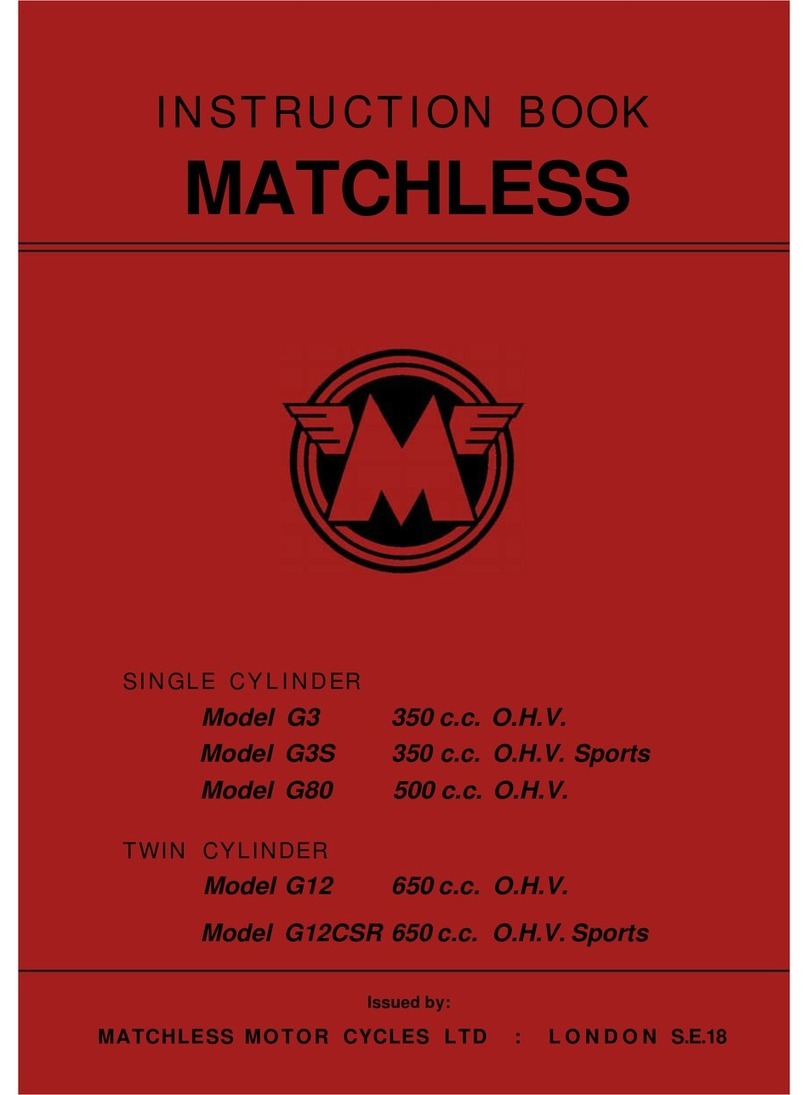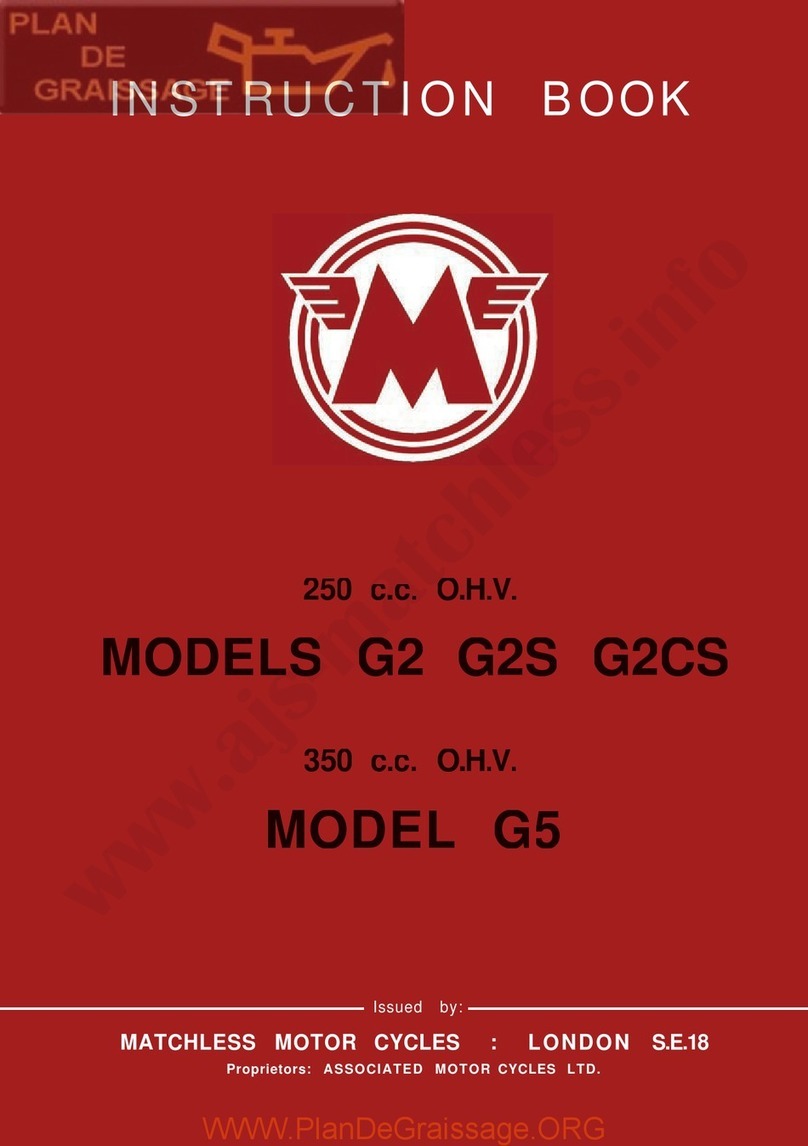CONTROLS
(1)
(2)
(3)
(4)
(5)
(6)
(7)
(8)
(9)
(10)
(11)
(12)
(13)
(14)
(15)
(16)
(17)
Throttletwistgrip.Twistinwardstoopen.Whenfullyclosedengineshould
justidlewhenhot.
Aircontrollever.Pullinwardstoincreaseairsupply.Onceset,whenengine
haswarmedup,requiresnoalterationfordifferentroadspeeds.Shouldbefully
closedtostartenginefromcold.
Ignitioncontrol.Advancesandretardsignitionpoint.Pullinwardstoadvance.
Retardtwo-fifthsoftotalmovementforstarting.
Valvelifterlever.Smallleverclosetoclutchlever.Liftsexhaustvalvefrom
seat,releasingcompressionincombustionchamber,enablingenginetobeeasily
rotatedforstarting.Alsousedforstoppingengineifthrottlestopisset
asadvisedinPara.(1)above.AlsoseePara.6.
Clutchlever.Largeleverinfrontoflefthand.Griptoreleaseclutchsothat
drivetorearwheelisdisconnected.Usedwhenmovingawayfromstandstill
andwhenchanginggear.
Frontbrakelever.Largeleverinfrontofrighthand.Griptooperatefront
wheelbrakeand,fornormalbraking,useinconjunctionwithrearbrakeappli-
cation.SeePara.9.
Rearbrakepedal.Depresswithleftfoottoapplyrearbrake.Applygently
anduseincreasingpressureasroadspeeddecreases.
Gearchangepedal.Controlsselectionofthefourspeeds,orratios,between
engineandrearwheelrevolutions,witha " free,"orneutral,position.See
Para.7 andIllustration3.
Kick-starterpedal.Thealmostverticalpedalonrighthandsideofgearbox.
FordetailsofuseseePara.5 andIllustration2.
Lightingswitch.Intopofheadlamp.Controlslampsbyrotatingleverwhich
hasthreepositions:—
(1)" OFF."Lampsnoton.
(2)" L."Pilotbulbinheadlampandrearlampon.
(3)" H."Headandrearlampson.Headlamphasa doublefilament.See
Item(17)below.
Ammeter.Intopofheadlamp.Indicatesflowofelectriccurrentin,orout,
ofbattery.("Charge" or" Discharge.")
Hornpushswitch.Depressbuttontosoundhorn.
Gearboxfillercap.SeeParas.23and66.
Footrest.Forrider.
Petroltankfillercap.Torelease,slightlydepress,turn,andthenliftaway.
Oiltankfillercap.OperatedasPetroltankfillercap(15).
Dippingswitch.Triggerswitchonlefthandlebar.Usedtoselectnormalor
"dipped" beamofheadlampwhenmainlightingswitchleverisinthe" H "
position.
2CONTROLS
































